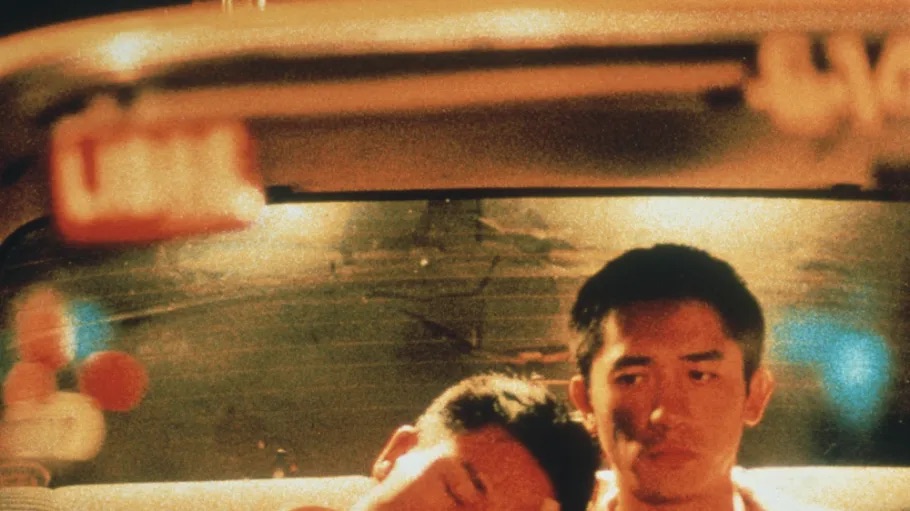In Fellini Satyricon, the adventures endured by Encolpio and Ascilto allow them to explore various power dynamics. Throughout Fellini’s film, the bold, surreal, dream-like setting contributes to the sense of aimlessness that viewers feel as they watch the film, in addition to the disjointed storylines throughout. The fact that it had a non-linear storyline, and no easily identifiable plot, leaves the film up for different interpretations from each viewer. When viewing this film, the main question I kept in mind was, what makes this a queer road-trip film and how does it connect to the course?
I believe that the disorientation comes from various factors. First, the dialogue was intentionally out of sync which made me feel a sense of detachment. The different accents between Asyltos and Encolpius also contributed to the sense of detachment and disorientation. Additionally, the music makes the film dynamic unsettling because it does not seem to fit correctly. These factors contributed to what felt like a hallucination as I was watching the film.
If we break down the name of this course, I see it as two things being brought together and analyzed through film: queerness and road-trips. Queerness is defined by multiple factors according to Annamarie Jagose’s queer theory. She touches on performativity, and believes that queer identities are not fixed, rather they are performed within culture contexts (Jagose, 1996). She also defines queerness with the use of anti-essentialism (Jagose, 1996). Jagose believes that sexuality should be more fluid rather than a fixed and defined category (Jagose, 1996). By having a more fluid outlook on sexuality, it allows for more diversity and complexity (Jagose, 1996). Third, she explains how heteronormative practices reinforce currently dominant structures within society by marginalizing non-normative sexualities (Jagose, 1996). Lastly, she defines queerness in terms of socio-cultural contexts, explaining how mainstream culture interprets queer individuals (Jagose, 1996). The other aspect of the course is road trips. To me, a road trip is a journey taken usually by car or bus that has a physical and/or metaphorical meaning.
If I take a look at Jagose’s definition and my interpretation of road trips, and how it is connected to Fellini Satyricon, I only see one aspect of the course name clearly established throughout the film: queerness. The idea of road-trips doesn’t seem to have any prominence in this film. When I think of road-trips, I think of where they start, where they end, and everything in between, and a road trip is usually described in a quite linear fashion. For example, Bob and I went on a road-trip from location X to location Y, and our journey went like this. But in Fellini Satyricon, there was no defined start or end of the journey, and although they showed “everything in between,” without knowing the start and end, it was very difficult for the viewer to understand what was happening. So, the idea of road trips are being contradicted metaphorically and physically. I do not see a correlation to road-trips throughout the film.
As said previously, queerness can be seen often throughout the film. It was normalized for homosexual relations to occur, especially between men. From the beginning, Encolpius and Asciltos are competing for their romantic relationship with a young, slave boy, Giton. Although the viewer was able to follow this idea easily in the beginning, it became more disconnected as the film continued.
The relationship between the young men and Giton were not the only homosexual relationships though. At Trimalchio’s banquet, Trimalchio’s wife can be seen kissing another woman. At the sight of it, Trimalchio gets frustrated and throws food at her. This was an interesting scene, because not only did it show the theme of queerness seen in the film, but also the power dynamic. Trimalchio throwing food at his wife seemed very disrespectful, and while everyone at the dinner found it funny, it goes to show one of the power dynamics displayed in the film, specifically the idea that men are dominant and hold more power over women.
In Fellini Satyricon, I feel that queer identities are shown throughout, but the idea of road-trips don’t seem prominent. Metaphorically, the idea of road trips is contradicted throughout the entirety of the film. Physically, I see little to no association between Fellini Satyricon and road trips. Although the plot was not linear and very disjointed, I feel that if I were to possibly watch it again, I could possibly piece together more information. Knowing what themes are identified, I also feel that I would be able to identify more examples.
Bibliography
Jagose, A. (1996). Queer Theory: An Introduction. New York, NY: New York University Press.

Leave a Reply